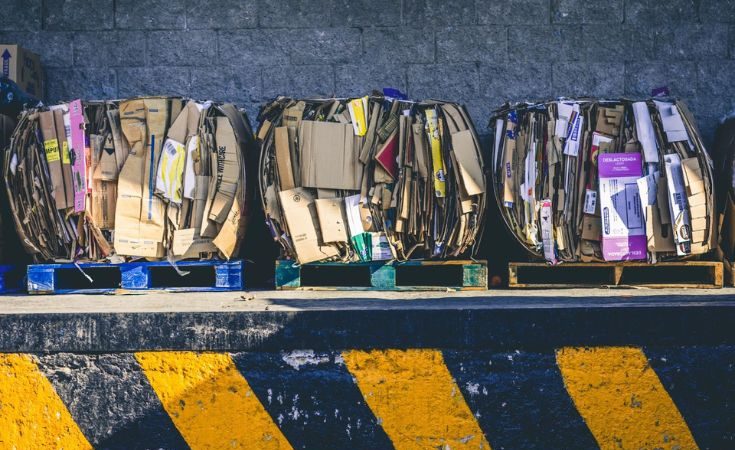In a world constantly bombarded with consumerism, we have been piling up waste from our own usage of things. This includes the waste that our product packages take up after consumption. Seeing that this is the only inhabitable planet that we could live on at the moment, we need to look deep into ourselves as entrepreneurs and producers and ask: “How could we reduce packaging waste while saving on costs at the same time?”
Last month, we talked about how we could make branding work as an aspiring entrepreneur. Today, we are going to walk you through one of the ongoing concerns that we should be facing now at the frontlines of our fight to save our environment: reducing waste wherever we can. Specifically, we are gonna go through with how we can reduce packaging waste while simultaneously saving costs. If that sounds interesting to you then I suggest you read on!
What is packaging waste?
Packaging waste is the component of a product, either as the packaging itself or its material, that is discarded after consumption. It includes plastic bottles that used to hold drinks, or the wrappers that used to cover snack bars and the like. Most of what is considered as packaging waste come from single-use plastic such as those used in food packaging and this has been linked as a consequence of consumerism and throwaway culture (D. Hall, 2017). Practically almost everything that we use as packaging for our products eventually becomes packaging waste.
Why do we need to reduce packaging waste?
Packaging waste is a major contributor to the total waste that we are dealing with in the world today. We could see the effects of these wastes whenever they clog up drainage lines which eventually lead to floods and when new landfills have to be opened simply because the older ones have been overflowing with so much of it. Most of the packaging waste that we also produce consist of plastic which takes a long time to break down and could eventually spread harmful pollutants as they do.
How do we reduce packaging waste?
Luckily, as producers, we have the means to help reduce the amount of packaging waste that could be added into circulation. It all starts with conducting a waste audit.
A waste audit simply means segregating all the waste you produce into categories based on their material and measuring how much you produce in each category over time. This can be done on your own if you own a small business or you could hire a professional to do it for you if it’s within your budget.
Once you have assessed your waste through the waste audit, the next thing to do is following the waste hierarchy through the following steps in order:
- Prevention – In this step, you look into how you could prevent waste from occurring anywhere in the production line. This is the most effective way to handle waste because it keeps it from actually happening.
- Reuse – The next step is checking which materials from the waste pile could be given another life and be used again.
- Recycle – Materials that cannot be reused should be considered for recycling. Numerous waste-handling facilities have recycling services. Simply bring the materials to them (segregated, of course!) and they’ll handle the rest.
- Recovery – In this step, you identify which materials from your waste pile could be given a new life as a new product or packaging component. Got extra strips of cloth from one packaging line? You could recover those and use them as a ribbon for another product!
- Disposal – The final step that should only be done after all the other steps have been given consideration. This simply just means transferring the waste to the landfill or some similar waste management facility.
How would these reduce cost?
The most direct-to-the-point explanation to this would be that reducing packaging waste actually saves you money in the packaging process. As we have discussed, before we head on to the disposal step we first have to assess which aspects of the production or packaging line could have prevention methods installed that limit the amount of materials the process could waste. When we do have waste, we first assess if they could be reused in any manner, recovered for another product, or sent to recycling facilities. These all contribute to a reduction in packaging costs by reducing the materials to be acquired or even reducing some components of your production line’s manufacturing overhead.
Conclusion
It goes without saying that having a solid partner that could provide you with an effective and efficient packaging service like Cr8tive Boxes and Labels could drastically help you with this, offering custom paper-based packaging such as folding cartons, non-adhesive labels, stickers, hangtags, sleeves, and paper bags. Don’t know where to start with the packaging of your products?
Give Cr8tive Boxes & Labels a message!
References
FSB, The Federation of Small Businesses. (n.d.). How to reduce waste in your small business. FSB, the Federation of Small Businesses. https://www.fsb.org.uk/resources-page/how-to-reduce-waste-in-your-small-business.html
How your business can cut costs by reducing waste | NC State Extension Publications. (n.d.). https://content.ces.ncsu.edu/how-your-business-can-cut-costs-by-reducing-wastes
Hall, D. (2022, April 5). Throwaway culture has spread packaging waste worldwide: here’s what to do about it. The Guardian. https://www.theguardian.com/environment/2017/mar/13/waste-plastic-food-packaging-recycling-throwaway-culture-dave-hall

